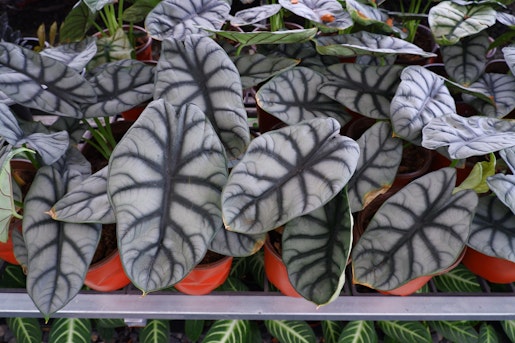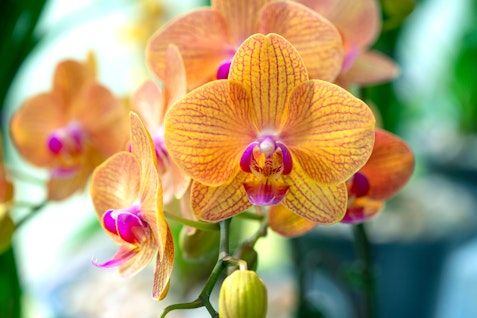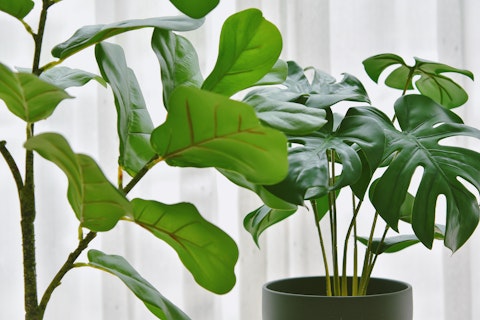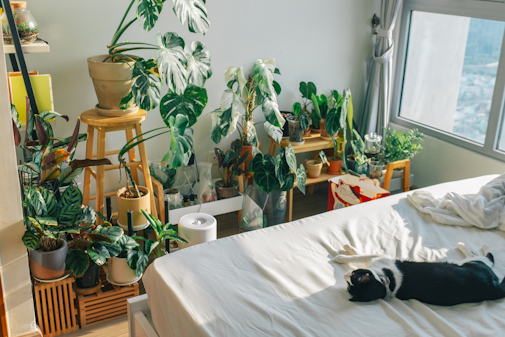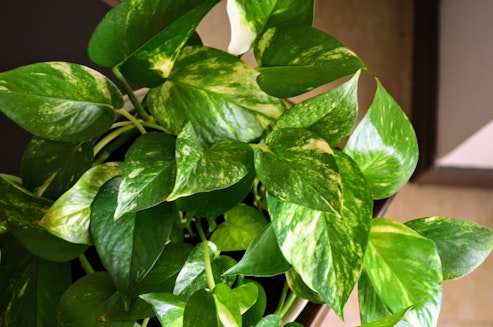
- Home
- Transform Your Space with Interior Trees & Plants
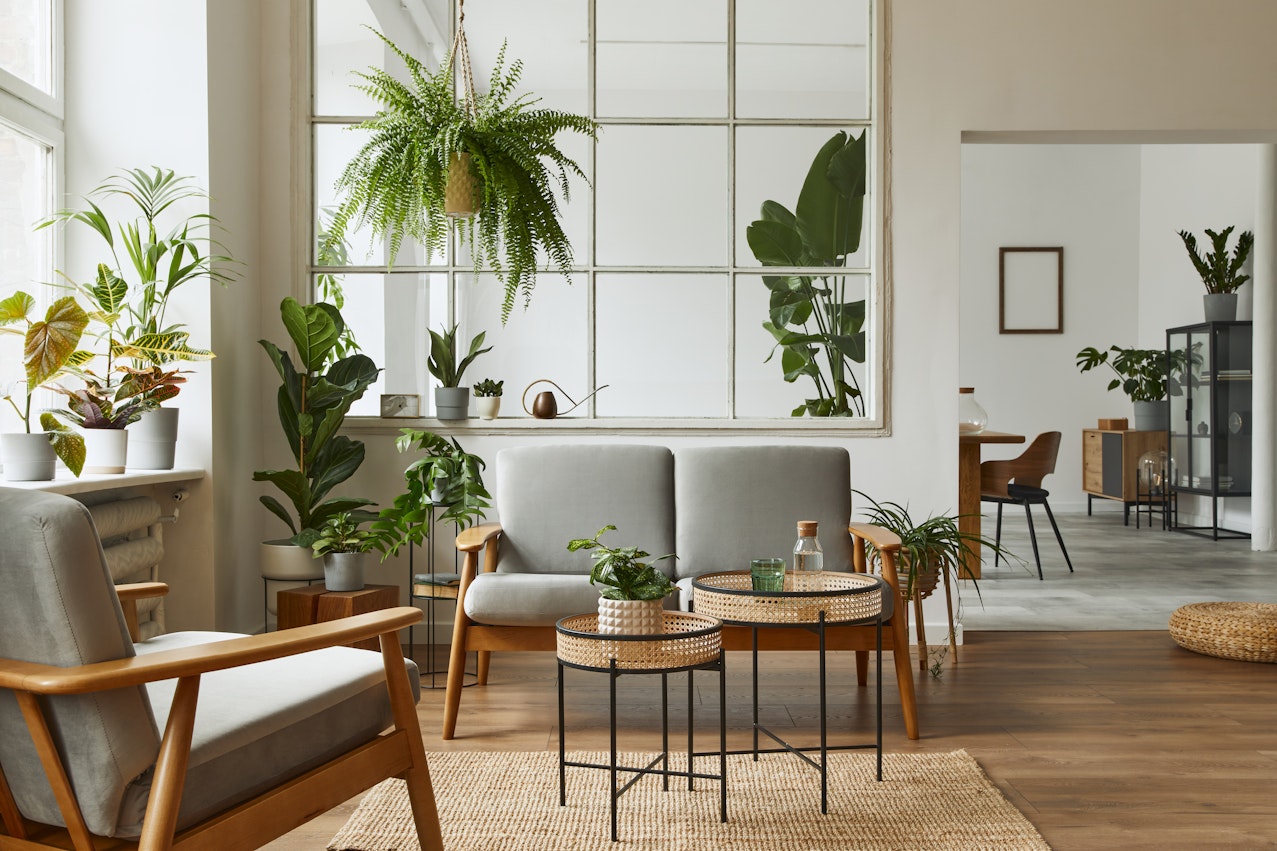
Interior trees and plants are a number of plants that have adaptations that allow them to survive under indoor conditions. These are perennial plants with low humidity requirements, filtered or shaded light and sparse watering requirements.
Interior plants have been proven to improve mental health, reduce anxiety, stress and depression, and improve our physical health by means of slowing the heart rate and reducing blood pressure, amongst many other things! The benefits of having plants in an indoor space are innumerable and immeasurable!
Types of Interior Trees and Plants
Interior trees and plants come in many shapes, colours and sizes. There are large vertical trees with spaced leaves or bushy and shrubby trees with heavier or denser foliage. There are climbing and trailing vines that can hang from high surfaces or be installed as a feature plant on a moss pole or coco pole.
Smaller plants can trail and hang also, or can be kept in a ceramic, having sparse or dense leaves or boasting colourful blooms or leaf patterns. When it comes to interior plants, there is something for everyone!

Interior Plant Care and Maintenance
Watering can seem like a gargantuan task, but it is nothing to be feared! The general best tips for watering plants are to check the soil first, if it's dry: give it a drink, if wet: leave it alone! This ensures the plant doesn’t get overwatered, which can lead to root rot.
If you water sparingly and spread a small amount of water over the base of the plant's stem, the roots will do the rest! For larger plants, this will be less often, and for smaller plants more frequently. Subsequently, the rate of watering will be significantly more in the summer than the winter, due to the higher temperatures and stronger light.
It’s important to note that various plants need varying degrees of light. The sole generalisation that can be applied to all plants is that they require a day/night cycle to thrive. Information for specific types of light for different plants can be read on our blog here.
Finally, nutrition and fertilisation are aspects of plant care that seem to scare people, but it really is a simple thing. Plants need nutrients to thrive, and plant food can be provided during periods of active growth.
The easiest way to do so is mixing a small amount of plant food in with your water during spring and summer months, and then letting the plant rest as the days start to get shorter. This is a foolproof method that requires minimal hard work, and keeps your plants happy and healthy all year round!
Popular Interior Trees and Plants
Below is a short list of the most popular interior trees and plants. These are hardy plants that thrive in adaptable environments and require little attention, but the list of appropriate houseplants is so excessive it could never be condensed into a short list! If you’re looking for somewhere to start, I’d try here:
Ficus lyrata (Fiddle Leaf Fig) - A vertical growing tree, with large violin-shaped leaves. Loves bright indirect light and is a reliable grower and can be pruned to encourage bushy growth!
Pachira aquatica (Money Tree) - An exciting tree species with fascinating leaf shapes. That is: 4 or leaves growing from a central point extending from the stem. These plants love filtered light and grow reliably creating a wonderful feature plant for your office or residential space!
Ficus elastica (Rubber Tree) - A vertical growing tree with large, ovulate leaves growing from the central stem. The leaves have a thick leathery texture, and sub-species and cultivars exist with deep purple colours, white splashes, deep green colours and white leaf margins among many more! They are a reliable plant, with such diverse variety that they can add a splash of colour to any home!
Sansevieria trifasciata (Snake Plant) - A plant that grows well in shaded areas, making them ideal for low-light office spaces! They have long, pointed, vertical leaves and are often a variety of patterns and colours, adding a unique flair to any space they’re in, with very little in the way of care requirements!
Spathiphyllum wallisii (Peace Lily) - A low-light, flowering plant that produces beautiful white flowers all year round if provided with adequate care. Great for smaller spaces and table centrepieces that don’t get bright light.
Epipremnum aureum/ Philodendron scandens/ Scindapsus pictus (Pothos) - A vining plant that can be trained to grow up something, or hang down from something. The three species noted here all grow in similar ways but with dramatic differences in colour and texture. They grow well in low light conditions and are a great plant for first-timers!
Monstera deliciosa (Cheese Plant) - A large-leaf climbing plant that can grow well in medium light, but can handle more intense light as it gets larger. Younger specimens produce small heart-shaped leaves on long petioles, while more mature specimens produce huge leaves with regular holes and gaps in them called ‘fenestrations’, adding a unique plant to your space that is varied and striking it is like a work of art in its own right.
Where to Place Interior Trees and Plants So They Can Thrive
The most important thing to consider when thinking about plant placement is light levels. Specific plants have specific light requirements, so it's good to try and identify your plant and find out what type of light it needs!
We’ve written a handy guide to this here, which you can easily access if you need it! And if that wasn’t easy enough, we have this diagram that helps you to decipher what types of light occur where in relation to a light source!
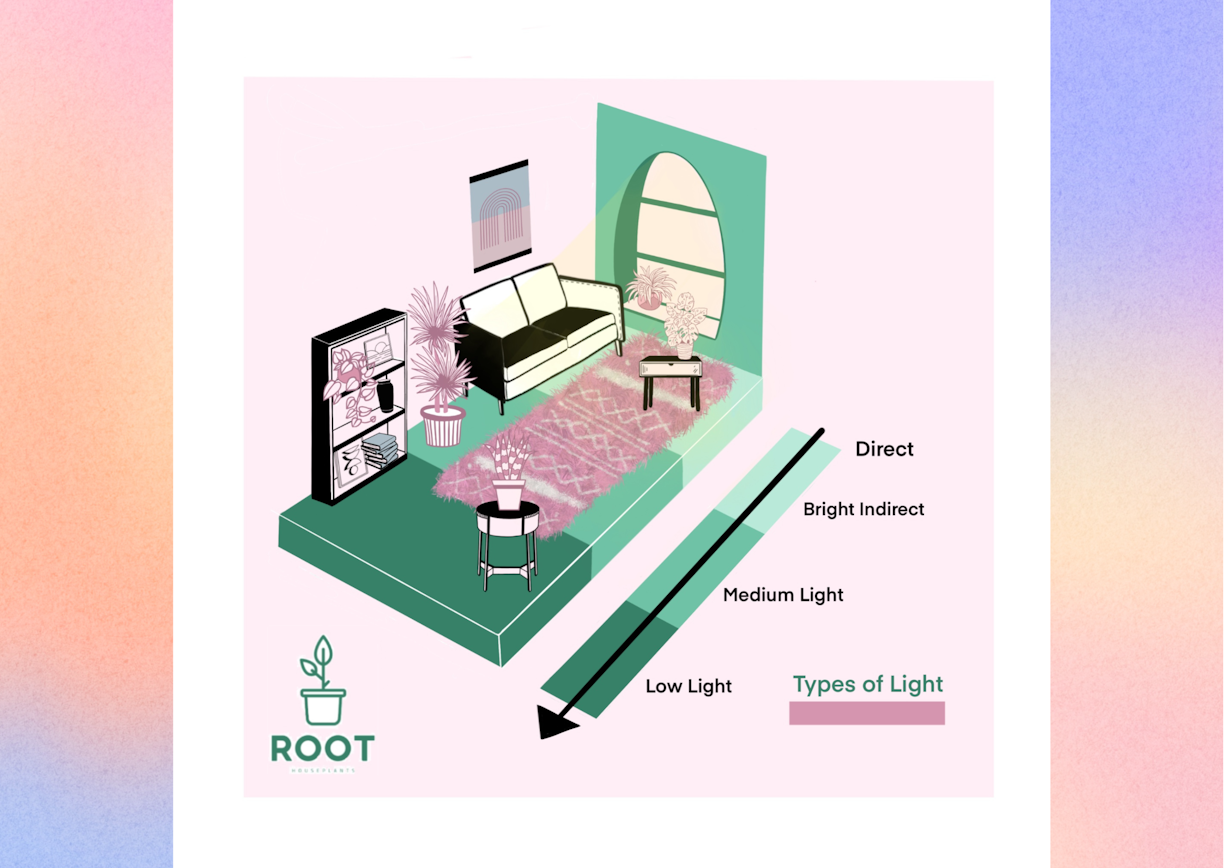
Conclusion
Introducing interior trees and plants to your home or workplace is an excellent way to bring nature back into your life. Plants do not have to be a full-time job, and the ones listed above require minimal care with a huge reward, and they get better as time goes on!
They brighten up interior spaces while providing various mental health benefits, physical health benefits and allowing us to practise time management and regulation! So, maybe now you will make the jump. Get your first interior plant or, if you already have one, consider another, and watch the results speak for themselves!
Bibliography:
Erzsebet, B.U.T.A., Cantor, M., Singureanu, V., Husti, A., Denisa, H.O.R.Å. and Mihai, B.U.T.A.,
- Ornamental plants used for improvement of living, working and studying spaces
microclimate. ProEnvironment Promediu, 6(16).
Hall, C. and Knuth, M. 2019. An update of the literature supporting the well-being benefits of
plants: A review of the emotional and mental health benefits of plants. Journal of Environmental
Horticulture. 37(1).
Ryan, C.O., Browning, W.D., Clancy, J.O., Andrews, S.L. and Kallianpurkar, N.B., 2014.
Biophilic design patterns: emerging nature-based parameters for health and well-being in the
built environment. ArchNet-IJAR: International Journal of Architectural Research, 8(2), p.62.
Jonathan Davies
Jonny has worked at Root since May 2023. His love for plants was inherited initially from his grandparents and parents, but really took off once he moved into his own place, where he started picking up small plants and was fascinated by watching how they grow and change over time. Jonny has a degree in Archaeology and Classics from the University of Sheffield, and a masters in Egyptology from Swansea University, where he primarily focused on garden culture in the ancient world, which he has managed to extend to a PhD thesis in the University of Liverpool, where he has been able to combine his love for plants with his love for ancient language and culture. Jonny loves being in the natural spaces around North Wales and Cheshire where he used to go growing up, and often spends hours examining the plants and trees, and kicking up the leaf litter searching for mushrooms and insects. He is fascinated most by plant biology, taxonomy and learning about ecosystems and interactions between plants and their environmental counterparts, and enjoys tending to his varied array of houseplants, and ongoing ‘plant projects’, such as growing plants from seeds and creating living epiphyte displays. Aside from his green thumb, his other interests include: art, reading, listening to and playing music in the company of his cats, Spooky and Boo.
More by Jonathan DaviesRelated Articles
View all articles
